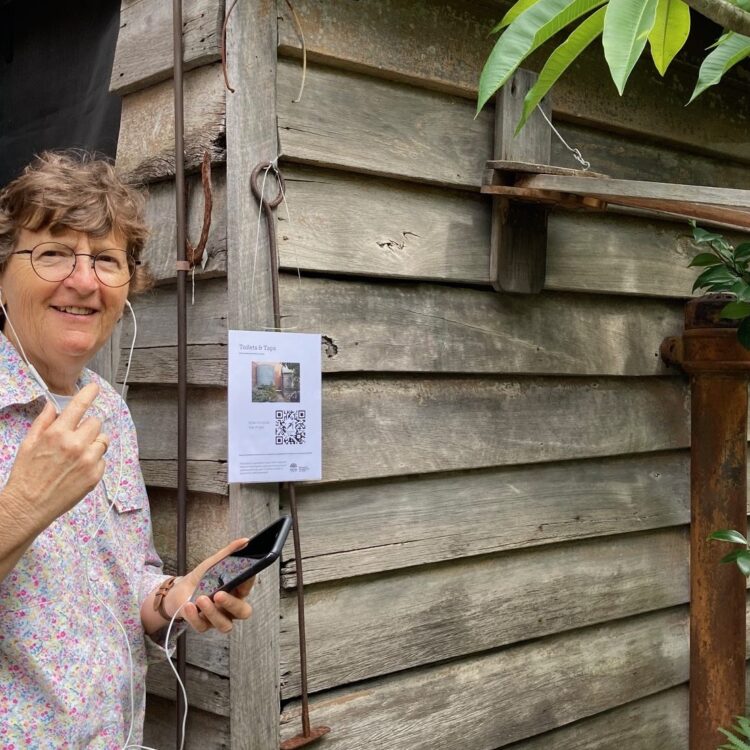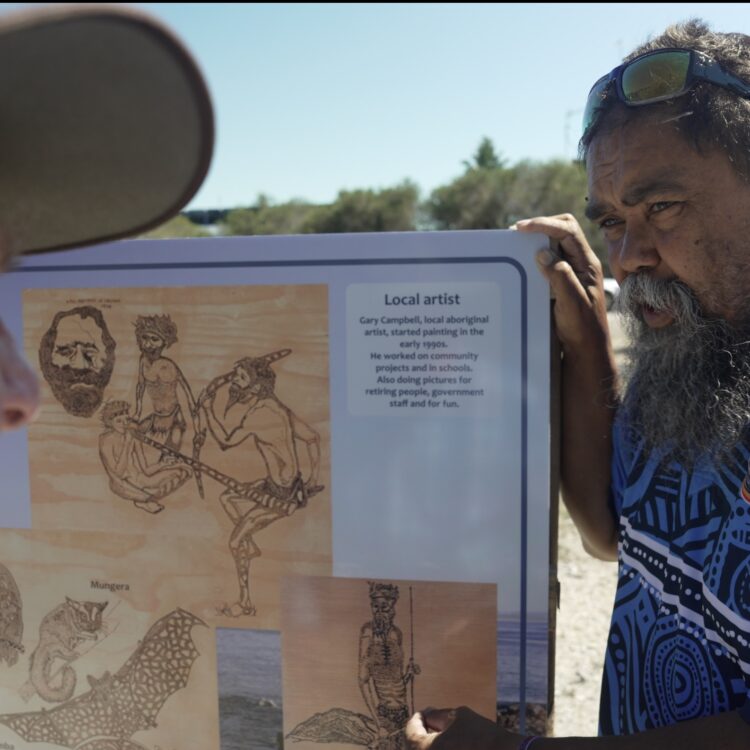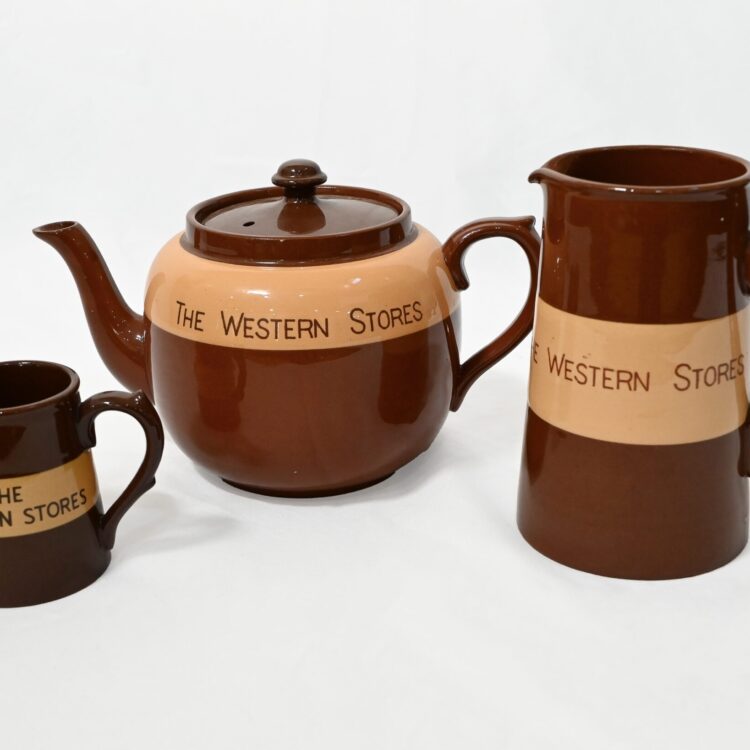Lieutenant Reginald Walter Saunders, the first Aboriginal commissioned in the Australian Army
is congratulated by Lieutenant Tom Derrick VC DCM after their successful graduation from the Officers Cadet Training Unit at Seymour, Victoria, 25 November 1944. [AWM collection item 083166]
The Australian War Memorial recently published an online history of Indigenous involvement in military service.
It’s a welcome addition to the growing body of information about Indigenous histories in general and is especially timely given the Anzac Centenary and other significant WWI commemorations.
According to military historian Dr Chris Clark, who researched and wrote the history, “Not only have Aboriginal and Torres Strait Islander people served in both world wars but they have also served in every conflict and commitment involving Australian defence contingents since Federation, as well as during the intervals of peace since the Second World War.”
Indigenous involvement in the Australian military is in dramatic contrast with the colonial history of the Frontier Wars, when their ancestors fought to the death to protect their lands from invaders, including Crown and State sanctioned violence. It is striking then that Indigenous people chose to fight on foreign soil against abstract ideals alongside those who had opposed and continued to oppose them well into the 20th century.
In this context, and as Dr Clark puts it, “volunteer enlistment in the armed forces is not something one would naturally expect after the Aboriginal experience of the 19th century”, an aspect which makes reading this history more intriguing.
M&G NSW recently interviewed the man behind Indigenous service in Australia’s armed forces in peace and war, so read on to see what he had to say.
M&G: Congratulations on the project and thanks for agreeing to talk with us. We have been working our way through the online history and have a few questions for you.
As a military historian you have been researching and writing about Australian military history for more than 40 years and until recently headed up the Air Force History department. What drew you to this aspect of military history and do you think your personal interest is indicative of a growing community interest in the topic?
CC: The realisation that there is an Aboriginal and Torres Strait Islander dimension to the history of Australia’s wars came right at the beginning of my career as a military historian, and I incorporated it into several of the projects undertaken since then. For instance, when I was asked to edit a compilation of military lives from the volumes of the Australian Dictionary of Biography—published as The Diggers in 1993—I made sure that Aboriginal soldiers from the First World War were represented, and when I produced the Encyclopaedia of Australia’s Battles a few years later I made sure that major episodes from the Frontier Wars were also included.
So, I think it’s fair to say I have always felt the need to ensure that Indigenous participation in our wars received proper public recognition, even when the full extent of that service was largely unknown or ill-defined. My personal interest in the aspect certainly isn’t new-found, and judging from the number of times the first article I wrote on the subject, back in 1973, has been cited and used by other writers, I could probably claim to have helped spur the level of community interest that undoubtedly does exist today.
M&G: Indigenous people in Australia have always considered themselves warriors and are dismayed when non-Indigenous people express surprise that Indigenous people have participated in all active wars to defend the country. What do you think is behind this response?
CC: Not being Indigenous myself, I’m not sure I can comment on the extent to which the warrior ethos of Aboriginal and Torres Strait Island men inspired their willingness to enlist in the nation’s wars. What I think is behind the non-Indigenous response you describe is more the puzzlement felt when it is realised large numbers of Aboriginal men enlisted in 1914-18 to fight a war for a country that had treated them and their families so badly for more than a century. When it is considered that memories of the Frontier Wars were still fresh, and the mentality behind them still alive in some parts of the country, the Indigenous response to the First World War, in particular, is truly amazing, almost inexplicable.
The fact that the 1939-45 conflict drew an even stronger response, possibly because Australia itself came under attack, makes me wonder if ‘love of country’—something not extinguished by dispossession—played a larger part in inspiring enlistment. I don’t expect we will ever know the answer to that question. Perhaps if historians can piece together enough personal stories from Aboriginal and Torres Strait Island veterans to analyse them for motivation we may get some clues, but I wouldn’t mind betting that we would probably end up with a list of factors as diverse as those suggested for why non-Indigenous Australians offered themselves for war service.
I am particularly struck by the several families who have established a tradition of defence service across successive generations; can one factor alone have produced that?
M&G: Black trackers were some of the earliest recruits to fight outside Australia. Could you explain the role of the Black trackers within the colonial context and how their skills were translated into active military service?
CC: The special skills that many Aboriginals possessed for surviving in the bush, like locating water and reading signs of movement by people and animals, were useful in colonial society—not least by police, explorers and surveyors who were helping with the process of dispossessing the Aborigines of their land. During the South African War, after the British Army had quickly crushed the main armies fielded by the Boer republics and occupied their capitals, the Boers switched to irregular warfare to continue the struggle.
During this protracted phase, which often became an intelligence war, British forces began experiencing difficulty in finding and pinning down the enemy’s elusive commandos and it was realised that Aboriginal tracking skills could be utilised equally well on the African veldt. That is why several contingents of Bushmen sent from the Australian colonies appear to have had a small number of ‘black trackers’ attached to them. Since neither side wanted to rely on the native African community, viewing them as neither trustworthy nor sympathetic in what was essentially a struggle between whites for control of their own lands; Australia continued to receive calls for more trackers until very late in the war.
M&G: The story about Indigenous Boer War recruits being denied re-entry into Australia (on account of the White Australia Policy) is one that has gained momentum in recent years. How did you investigate this and what is your current position on the story?
CC: I did look into the story about 50 Aboriginal trackers being denied re-entry to Australia because such claims certainly seemed like they should be taken seriously, even though I was restricted in how much new or deep research I could undertake in the time available to complete the War Memorial brief. On the basis of the evidence that the authors of the story have made publicly available, however, I am not persuaded that there is a solid basis to it.
My current position is as stated on the Memorial’s website: there is no hard evidence that a party of 50 Aboriginal trackers was ever sent in early 1902, let alone that a group this size was stopped from returning home. But if someone can come up with solid evidence …
M&G: What is known about the participation of Indigenous women in the armed forces?
CC: There may well be more to tell on this front, because I became aware of at least one case where a woman with Indigenous heritage who served in the Second World War was “claimed” by her descendant only in recent years. Of course, the issue of whether Aboriginal and Torres Strait Islander servicemen or women chose to acknowledge their heritage becomes a central difficulty in working out precisely how many personnel served in total.
The participation of women in the armed forces is as summarised in the online history: possibly one nurse in the First World War, at least nine in Army and Air Force during the Second World War. What work the latter women did has not been closely examined to my knowledge. Most appear not to have been nurses but were probably employed in administrative support and clerical duties; one, at least, worked in Army communications.
M&G: What role did the “Dad’s Army” type of defence units play in the top end during WWII?
CC: It wouldn’t be fair to describe any of the support work undertaken in Northern Australia as involving “Dad’s Army” units because that name would properly refer only to our Home Guard equivalent, the Volunteer Defence Corps. Although the Aboriginal and Torres Strait Islander garrison and special reconnaissance units raised in the Top End were auxiliary in nature, rather than frontline combat units, their role was important for helping ensure the security of airfields, detecting attempted enemy landings and aiding the recovery of downed allied aircrew—all important and worthy purposes in themselves.
Because the Army and Air Force had the largest concentration of their home defence forces located across Australia’s north, this created an enormous need for support services to sustain this mass of personnel. Hence, even the unglamorous labour units and others providing non-military services became significant in the overall picture. Apart from the simple need for the manpower that Indigenous residents provided, their local knowledge and bush skills were of inestimable value to the formed military units operating from or through there, or providing static defence of the area.
It may be easy to overlook the contribution of Aboriginal and Torres Strait Islanders because the expected Japanese landings in the north never came, but if they had the story would have been very different.
M&G: Communities have been working to increase the profile of Indigenous participation in military service for some time, and many projects such as The Black Diggers Project, the Queensland Aboriginal and Torres Strait Islander dedicated memorial and the Hyde Park YININMADMEYI memorial exist. What more should, or can be done?
CC: Raising the profile of Indigenous military service is, I think, the key to lifting the public awareness of this reality of Australian history. Acknowledgement that Aboriginal and Torres Strait Island people have an honourable place in the Anzac tradition is a valuable means of shifting the mindset of non-Indigenous Australians and providing a focus for Indigenous pride of achievement.
In that direction, the recent Army ceremony conducted at the Australian War Memorial (see video below) is important for demonstrating the Australian Defence Force’s ongoing commitment to recognising Aboriginal and Torres Strait Islander service in regard to ANZAC and Gallipoli.
What might help now would be to identify those who could be regarded as ‘heroes’ among the servicemen and women—something that is not going to be easy in a group where arguably so many achieved that status, merely by enlisting and giving surviving years of fighting on the Western Front and in the Middle East before mostly dropping back into the conditions in which much of the Indigenous community lived in Australia.
M&G: And finally, is a book on the topic planned?
CC: I have long had the thought of a book in the back of my mind. Now that it is evident that nobody has attempted the sort of publication that I think the subject deserves, I could be tempted to take it on. I just have to finish something else that I am working on at present before I can properly focus on the practicalities of what I have in mind.
Well, good luck, and we’ll be ready with our copy at the book signing.
Editor’s note: The modern defence forces actively recruit from Aboriginal and Torres Strait Islander communities in what can safely be called a continuing tradition: http://www.defencejobs.gov.au/indigenous/



